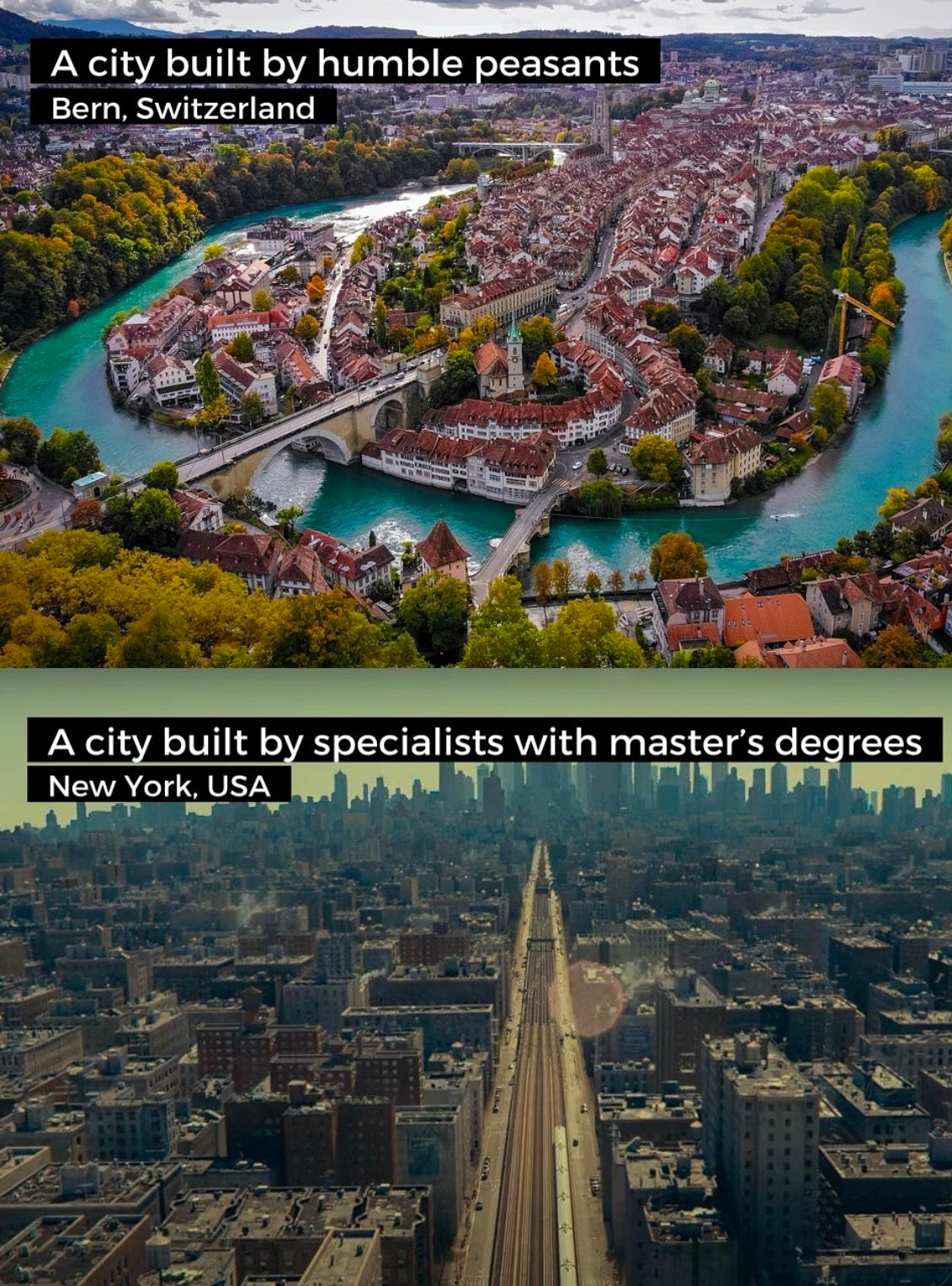WHY IS EVERYTHING SO UGLY?
The Orwellian Glow-Down: When Beauty Became a Sign of Bad Taste
The other day I was doomscrolling on Instagram - as one is wont to do - when I came across this arresting image:
What you’re looking at is essentially the before and after photos of civilization's aesthetic lobotomy.
Two drain pipes. Same basic hydraulic function – stopping water from ruining your day. Both basically exist to hemorrhage water into the street. On the left: an absolutely unhinged fever dream of bourgeois excess – some 19th-century artisan’s exquisite metalwork, turning basic drainage into a baroque fetish object that wouldn't look out of place in a Brothers Grimm fairy tale. It was made for a society that demanded aesthetic transcendence from even its humble drain pipes. It represents what Barthes would classify as the ultimate punctum (but applied to plumbing) – the unexpected detail that elevates a utilitarian object into an affective experience that transcends mere function.
The other one? Peak lumpenprole pragmatism. A soul-crushing utilitarian design that screams "this was manufactured during the final death throes of some failed state's industrial capacity." Yet it is now multiplication-signed across every facade on Earth, while those Victorian masterpieces of drainage micro-fantasia have gone extinct.
Experts will lecture you on how the second one represents 'honesty in materials' or the triumph of function over ornament. The crowning achievement of contemporary architectural discourse was turning 'I like things that look nice' into some kind of reactionary thoughtcrime, while 'I enjoy living in a concrete parking garage' became the enlightened position.
It's like we've all been gaslit into thinking our own visual cortex is problematic.
The truly perverse part about modern architecture isn't just that it's soul-crushingly ugly – it's that we've developed this elaborate intellectual framework to convince ourselves it's actually morally superior. It's like we're all in an abusive relationship with our built environment.
And it's not just drainage pipes. Everywhere you look, where once there was beauty, now there's a dearth of it. Street lamps that went from ornate cast iron to industrial poles. Public buildings that were once adorned with friezes and columns, now just cement blocks. Train stations that were marble palaces are now fluorescent nightmares. Bank lobbies that went from secular cathedrals to looking like airport security. Even everyday objects – mailboxes, benches, fire hydrants – all stripped of any decorative elements that might accidentally bring joy to someone's day.
So, why don’t we build beautiful things anymore?
Is beauty subjective? Is it in the eye of the beholder? Is that sad second drain pipe beautiful in its own way?
Is beauty a human need or is it a frivolous bourgeois obsession?
And how did everything become so ugly?
Let’s start our story in the middle. Let me tell you about the greatest architectural crime ever committed on American soil. In 1910,
Keep reading with a 7-day free trial
Subscribe to THE HEGELIAN DISPATCH to keep reading this post and get 7 days of free access to the full post archives.





